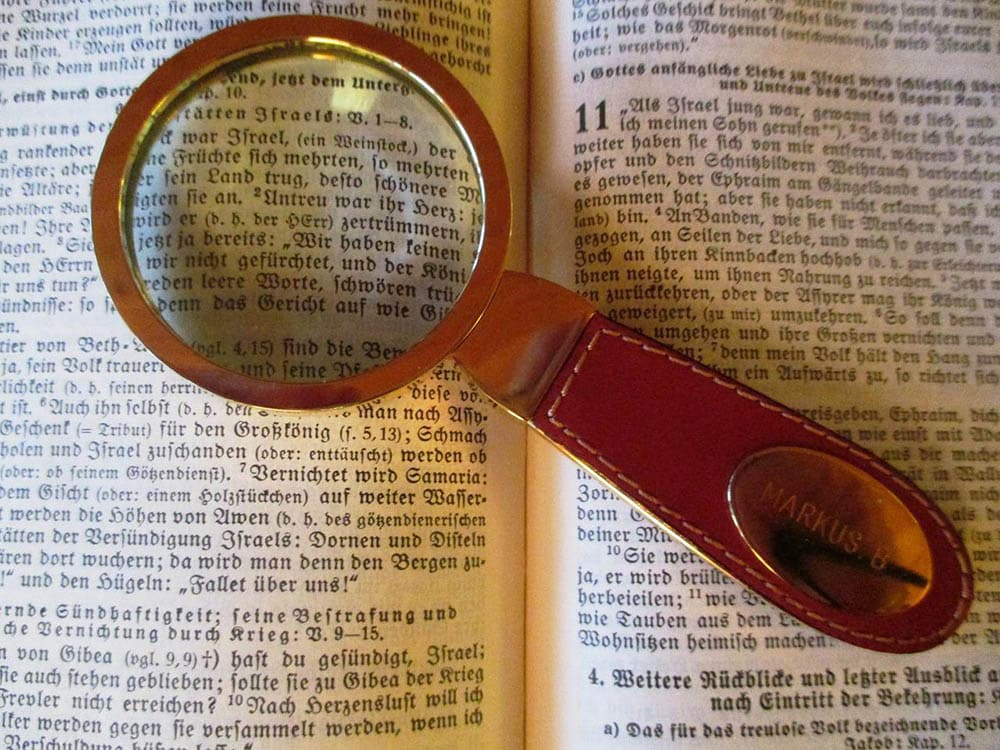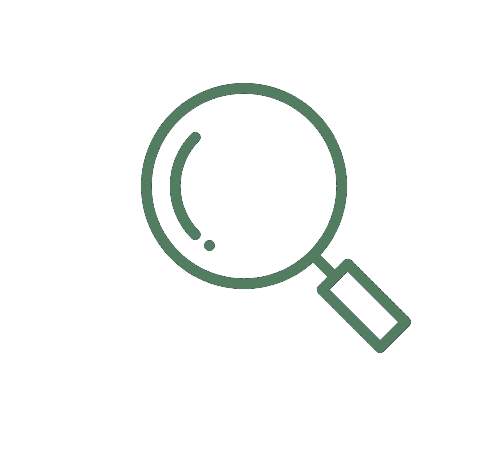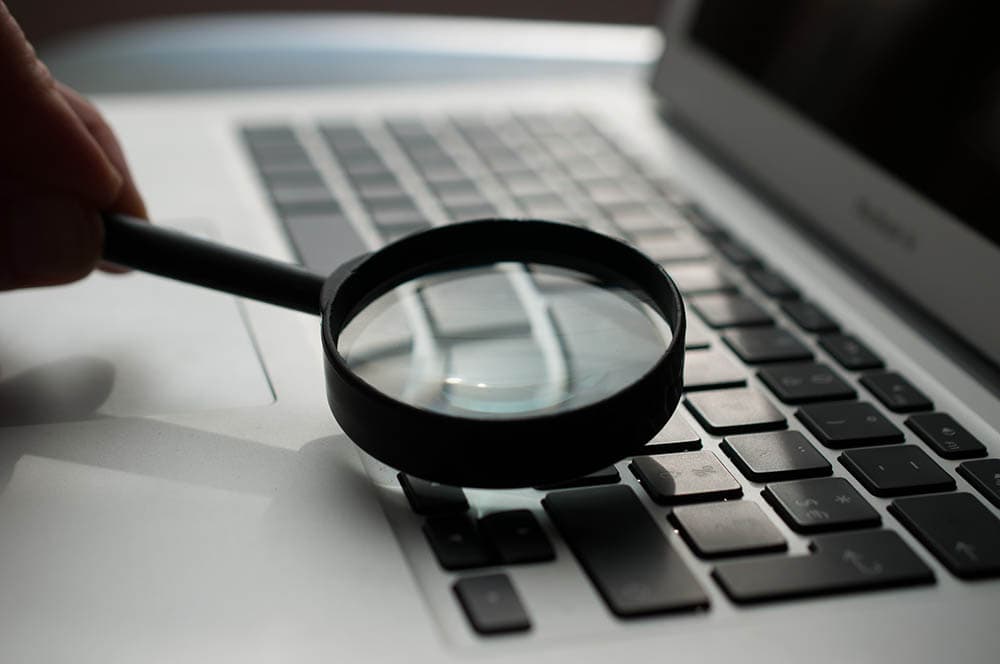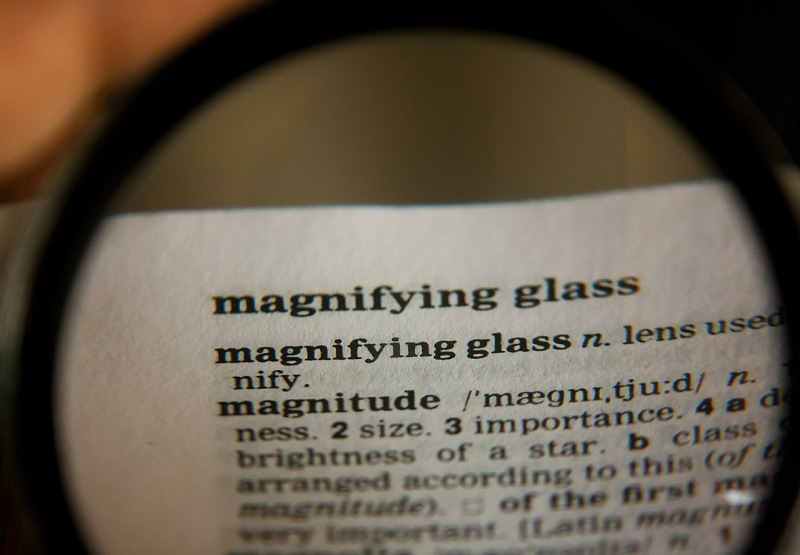7 Facts About Magnifying Glasses You Never Knew (2024 Update)
Last Updated on

Magnifying glasses are everywhere! Almost half of Americans need them to see properly, and as we age, that number skyrockets even further!
Scientists use them to make discoveries of a microscopic world otherwise invisible to us, and astronomers use them to view worlds larger than our own millions of miles away!
Magnifying glasses are an impressive invention, and it’s time to appreciate them more. What better way to do that than to look at a few of the most prominent facts about them?

Facts About Magnifying Glasses
1. The Earliest Known Reference to a Magnifying Glass Is From 424 B.C.
Nobody knows the exact date that humans first discovered how to magnify things, but we do know that it occurred quite a while ago. Aristophanes’s play, “The Clouds,” from 424 B.C. is the first recorded mention of a magnifying glass.
Aristophanes used it as part of a joke in the play, so it’s clear that humans have known how to use a magnifying glass for at least 2,450 years. Of course, there are not too many recorded writings from before that, so it’s impossible to pinpoint an exact date.
https://www.instagram.com/p/BxmXnzNCmrX/
2. The More Powerful the Magnifying Glass, the Smaller It Is
While this isn’t always the case, it holds true for the most part. There are only two ways to improve the power of a magnifying glass without making it smaller, and either option costs money and reduces the quality of the final image.
First, manufacturers can add multiple lenses, but this decreases the focal area. Second, they can bend the lens more, increasing the diopter. You can only do this so far, though, and the more you bend the lens, the smaller the focus area gets.
So, if you’re heading out to the store or shopping online, it’s a safe bet that small magnifying glasses offer more power than large ones.
3. Magnifiers Can Use Plastic or Glass Lenses
Most people jump straight to glass lenses when they think of a magnifying glass, but many magnifying glasses use plastic to achieve the same result. In modern magnifying glasses, there aren’t a ton of drawbacks to using plastic lenses, and they’re far cheaper than glass lenses.
In fact, it was the mass production of plastic lenses in magnifying glasses that led to the increased accessibility of microscopes and other scientific equipment in grade-school classrooms.

4. You Can Use a Magnifying Glass as a Projector
You’re not going to get a crystal-clear high-definition image if you’re using a magnifying glass as a projector, but you can indeed use them this way.
This DIY project is great for kids and adults alike, and it might just surprise you how effective it can be, considering it only requires a handful of things that you can get from the store.
5. You Can’t Use Most Glasses to Start a Fire
It’s a common thought that comes to mind when you’re trying to figure out how to start a fire on your own, and it’s a fun part of tons of Hollywood films. The problem is that if you’re nearsighted — like 41.6% of the United States population is — your glasses won’t work to start a fire.
The convex lens that makes objects farther away appear closer simply doesn’t concentrate light that way. However, if you’re a part of the 5% to 10% of Americans that are farsighted, you can use your glasses to start a fire — but it’s nowhere near as easy as movies make it out to be.
6. The Closest Distance That You Can Focus on an Object Changes as You Age
When we’re young, it’s easy to focus on things that are closer to our eyes. But as we age, that distance typically increases. The medical term for this condition is presbyopia, and it affects almost 80% of people between the ages of 45 and 55 in North America.
The older you are, the less likely that you can focus on things closer to you, and that’s when magnifying glasses can help you out!

7. Roger Bacon Used the First Known Reading Glasses
If you’re starting to need reading glasses or will need them in the future, you’re not alone. In the 13th century, Roger Bacon was the first known person to use reading glasses.
When people found out what he was doing, the idea took off. Before the 14th century rolled around, Italian craftsmen were already making and selling them to people throughout Europe.

Conclusion
Magnifying glasses have transformed the ways that humans see the world both near and far, and now that you have more information about them, hopefully, you have a better appreciation for what they can do.
They might seem ordinary to us now, but they’re extraordinary devices through and through!
Featured Image Credit: markus53, Pixabay
Table of Contents
- Facts About Magnifying Glasses
- 1. The Earliest Known Reference to a Magnifying Glass Is From 424 B.C.
- 2. The More Powerful the Magnifying Glass, the Smaller It Is
- 3. Magnifiers Can Use Plastic or Glass Lenses
- 4. You Can Use a Magnifying Glass as a Projector
- 5. You Can’t Use Most Glasses to Start a Fire
- 6. The Closest Distance That You Can Focus on an Object Changes as You Age
- 7. Roger Bacon Used the First Known Reading Glasses
- Conclusion
About the Author Robert Sparks
Robert’s obsession with all things optical started early in life, when his optician father would bring home prototypes for Robert to play with. Nowadays, Robert is dedicated to helping others find the right optics for their needs. His hobbies include astronomy, astrophysics, and model building. Originally from Newark, NJ, he resides in Santa Fe, New Mexico, where the nighttime skies are filled with glittering stars.
Related Articles:
How to Clean a Refractor Telescope: Step-by-Step Guide
How to Clean a Telescope Eyepiece: Step-by-Step Guide
How to Clean a Rifle Scope: 8 Expert Tips
Monocular vs Telescope: Differences Explained (With Pictures)
What Is a Monocular Used For? 8 Common Functions
How to Clean a Telescope Mirror: 8 Expert Tips
Brightfield vs Phase Contrast Microscopy: The Differences Explained
SkyCamHD Drone Review: Pros, Cons, FAQ, & Verdict
